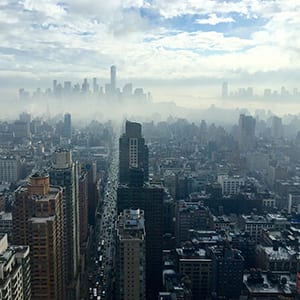On April 18, the NYC council passed Int No 1253-C, with the stated goal of reducing total building emissions by 40% by 2030, and 80% by 2050, when compared to a 2005 baseline. To do this, the law establishes the Office of Building Energy and Emissions Performance which is tasked with recording and enforcing new building emissions limits. These new regulations would be the first of their kind for any major city in the world.
The law defines “covered buildings” as all new and existing buildings over 25,000 sq ft., and all lots with buildings totaling over 50,000 sq ft., with some exceptions. While this represents only about 2% of all buildings in NYC, these buildings contribute 50% of building emissions, and 35% of the city’s total emissions.
Owners of covered buildings will be required to report emissions by converting their building’s total annual energy use from all sources into tons of CO2 equivalent (tCO2e), using values established by the office. The law then sets emissions intensity limits given in tCO2e per square foot, to which the reported emissions will be compared to determine compliance. A summary of these calculations must be submitted annually by May 1, beginning in 2025.
The first set of emissions limits will apply from 2024-2029, with stricter limits to be set for every subsequent 5-year period. These limits also vary by occupancy group in order to allow for the inherent diversity in energy needs by space type.
Penalties for exceeding the emissions limit will be assessed for each case, and will take into account specific mitigating or aggravating factors relating to the non-compliance. The penalty for failing to file a report can be up to $0.50 per square foot per month.
Deductions to a building’s reported emissions can be obtained by purchasing renewable energy credits, greenhouse gas offsets, or by the on-site generation of clean energy.
Upward adjustments to a building’s emissions limit can be granted under a variety of circumstances, including: landmark designation, severe space constraints, financial hardship, 24-hour facilities, and spaces with particularly energy intensive uses.
Rent regulated units, houses of worship, and buildings receiving certain subsidies are exempt from specific emissions limits, but are required to implement 13 “prescriptive energy conservation measures” which focus on modest upgrades to MEP systems and improved sealing of the building envelope.
The legislation was drafted with input from many groups in the real estate industry, including Brookfield Properties, Con Edison, the Durst Organization, NYU, REBNY, Related Companies, Tishman Speyer, and Sidewalk Labs. While the city is a long way from reaching its ambitious emissions goals, this legislation marks a significant step forward.


